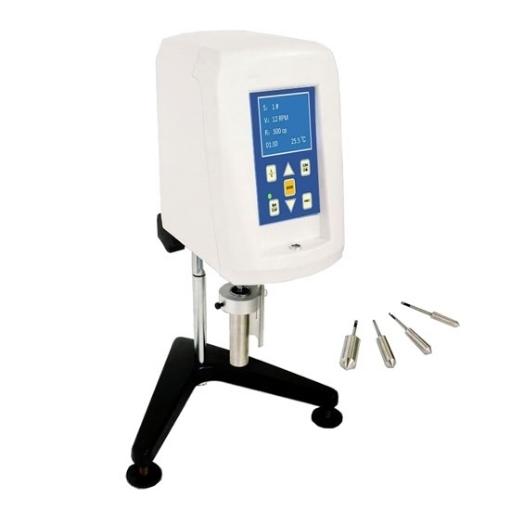In the realm of fluid dynamics and material science, the accurate measurement of viscosity is a cornerstone for understanding flow behavior, ensuring product quality, and optimizing industrial processes. One of the key decisions that can significantly impact the precision and reliability of viscosity measurements is choosing the right spindle and rotational speed for your sample. In this blog post, we'll delve into the intricacies of this decision-making process and guide you through the considerations that will help you select the perfect spindle and speed for your viscosity measurements.
Understanding Spindle and Speed Selection
A rotational viscometer operates by immersing a spindle, also known as a rotor, into the fluid under examination. The spindle rotates at a controlled speed, generating shear stress within the fluid, which in turn produces torque. This torque is measured and translated into viscosity readings. The choice of spindle and speed is critical because it directly impacts the shear rate experienced by the fluid and, consequently, the accuracy of the measurement.
Factors to Consider
- Viscosity Range: The first step in selecting the appropriate spindle and speed is understanding the expected viscosity range of your sample. Different spindles are designed to accommodate various viscosity levels. For low-viscosity fluids, use smaller, such as 1 to 100000 mPa·s, more delicate spindles, while higher viscosity fluids require larger, more robust spindles.
- Sample Volume: The volume of your sample matters. Smaller sample volumes might require smaller spindles to ensure the fluid's behavior is representative of the bulk material. On the other hand, larger samples necessitate larger spindles to achieve accurate measurements.
- Shear Rate Requirements: Consider the shear rate at which your sample's viscosity needs to be measured. Different applications might require different shear rates. For instance, if you're studying a material's behavior during processing, you'll want to replicate the shear rate experienced in that process.
- Non-Newtonian Behavior: If your sample exhibits non-Newtonian behavior, where viscosity changes with shear rate, it's crucial to choose a spindle and speed that correspond to the relevant shear rate range for your application. Some rotational viscometers allow you to adjust the speed to achieve different shear rates.
- Container Geometry: The size and shape of the container holding the sample can affect flow behavior. Be mindful of the clearance between the spindle and the container walls, as this can impact the flow pattern and viscosity readings.
- Manufacturer Guidelines: Most viscometer manufacturers provide guidelines and charts that suggest suitable spindle and speed combinations for various viscosity ranges. These guidelines serve as valuable starting points for your experiments.
Experimentation and Optimization
Selecting the right spindle and speed might require some experimentation and optimization. Start with the spindle and speed recommended by the manufacturer's guidelines for your estimated viscosity range. If the measurements don't match your expectations, consider adjusting the speed or trying a different spindle to achieve better results.
Choosing the appropriate spindle and rotational speed for your viscosity measurements is a meticulous process that requires a comprehensive understanding of your sample's viscosity range, shear rate requirements, and the nuances of your application. By carefully considering these factors and leveraging the guidance provided by the viscometer manufacturer, you can ensure that your viscosity measurements are accurate, representative


